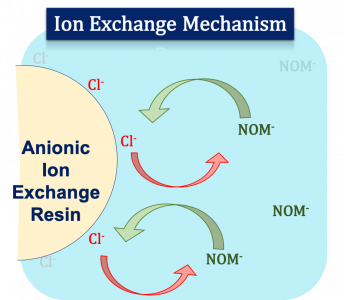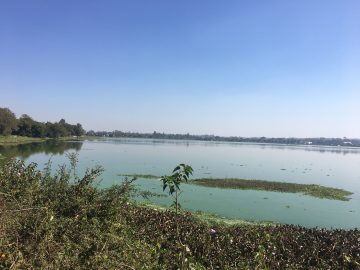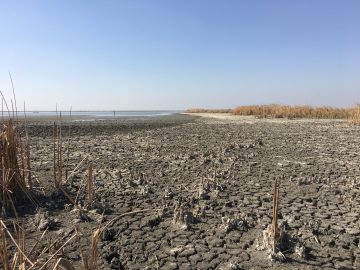
Advanced oxidation processes involve various combinations of ozone, hydrogen peroxide, ultraviolet (UV), and photocatalytic techniques that are capable of oxidizing a wide range of contaminants at moderate to high concentrations. My research interests are primarily on the development, design, and evaluation of UV based AOPs (i.e., UV-H2O2, Vacuum UV, or UV-photocatalysis) that are poised to replace conventional and often more expensive treatment technologies. This collaborative research aims to enhance the overall quality of drinking water, especially for small and rural communities. Specific objectives involve proper design and analysis of photoreactor configuration, UV or VUV irradiations, and operating parameters, all these being crucial for complete oxidation process and preventing the formation of harmful by-products. Also, we are focusing to understand of the effect water matrix constituents on treatment efficacy and also determine the effect of AOPs on finished water quality.
- UV-LEDs: water disinfection and micropollutant removal
- UV-185nm: Vacuum UV based advanced oxidation
- UV-254nm based advanced oxidation processes
- Ozonation

Anionic Ion exchange (IEX) process is a feasible, robust, and effective technology for the removal of natural organic matter (NOM), nitrate, and certain group of micropollutants from surface water. With its excellent performance and simplicity of operation, IEX has been increasingly considered and implemented in water treatment plants of various sizes (municipal to small communities). The IEX research in my laboratory is investigating various resins in terms of key design and operational parameters including removal kinetics, long term operation, and resin regeneration efficacy as well as impact on the quality of finished water. Also, we are working on novel ion exchange reactors/contactors for greater removal of contaminants and more effective regeneration of the resins.
- NOM Removal
- Perfluorinated Compounds
- Micropollutants
- Biological Ion Exchange

Our research in this area focuses on electrocoagulation technology for the removal of NOM from raw surface water, as well as electrochemical generation of ferrate, which is among the strongest oxidizing agents known. In electrocogulation, we are particularly working on scale up and pilot demonstration of the technology. Wastewater reuse requires advanced treatment technologies since these waters contain a range of chemical and microbial contaminants that can result in a range of human health implications when ingested, inhaled or absorbed through the skin. These technologies are often quite expensive since they employ processes like Reverse Osmosis (R.O.) and chemical oxidation to ensure maximum removal of the known contaminants. However, if salinity is not an issue, the RO can be replaced by an alternative low-cost treatment option. Our research aims to investigate the potential of alternative treatment technologies (to R.O.) for reuse of secondary and tertiary treated wastewaters for potable reuse.
The electrochemical methods for water treatment exhibit several advantages over more conventional chemical approaches, particularly when applied to small drinking water systems. These include: a) no required chemical supply chain, transport or handling; b) robust systems with minimal service and simple operational requirements; c) compactness and small footprint; d) green technology with low carbon footprint; and e) on-site and on-demand operation with a feedback control system.

Drinking water supplies are derived from a variety of natural surface and ground water sources across the globe. As population growth, urbanization, droughts and climate change continue to impact natural water resources, public water supplies are becoming stressed and necessitate the development of new strategies to meet future demands. One such strategy is the reuse of municipal wastewater, which is an increasingly important water supply option worldwide.